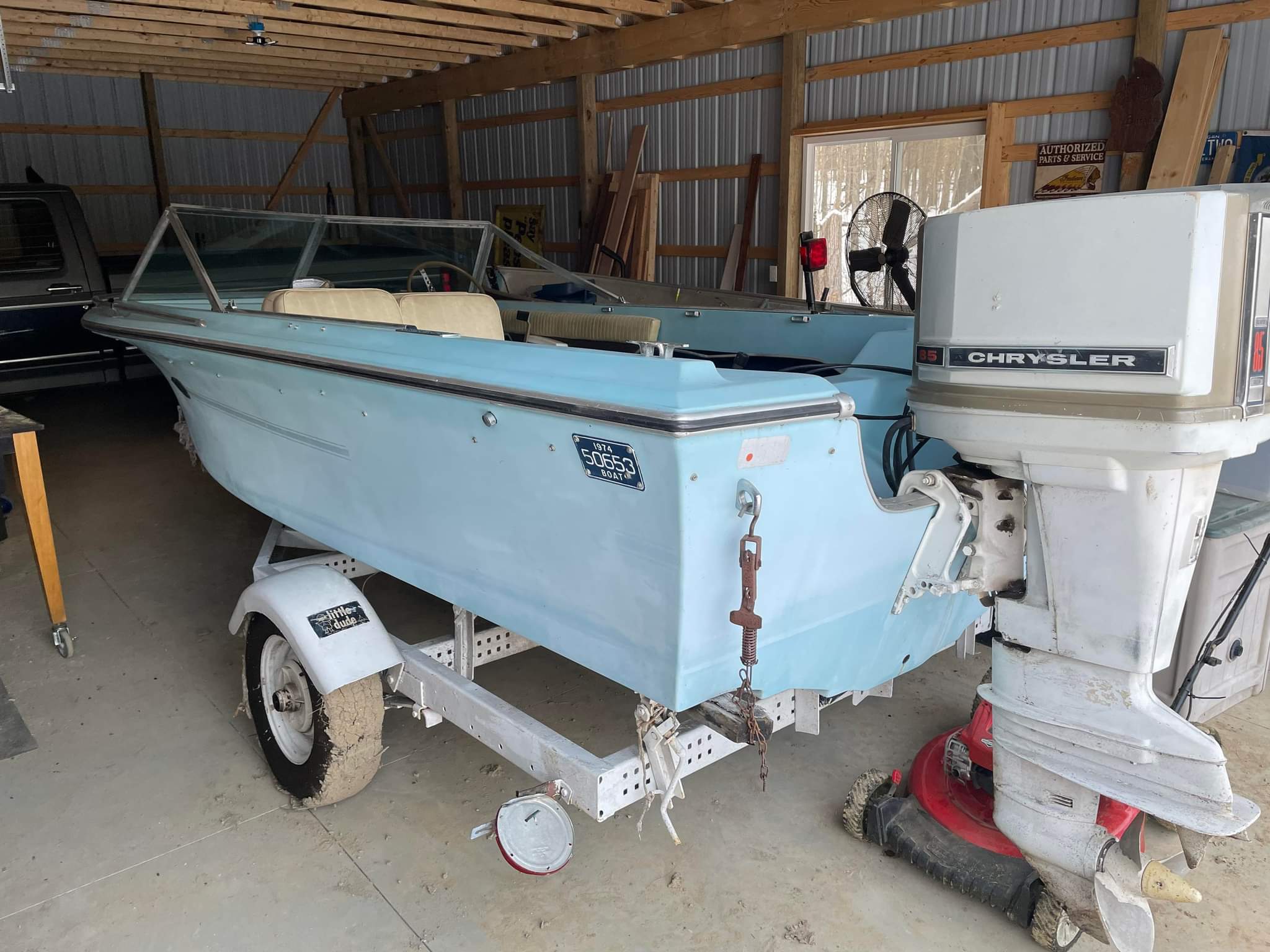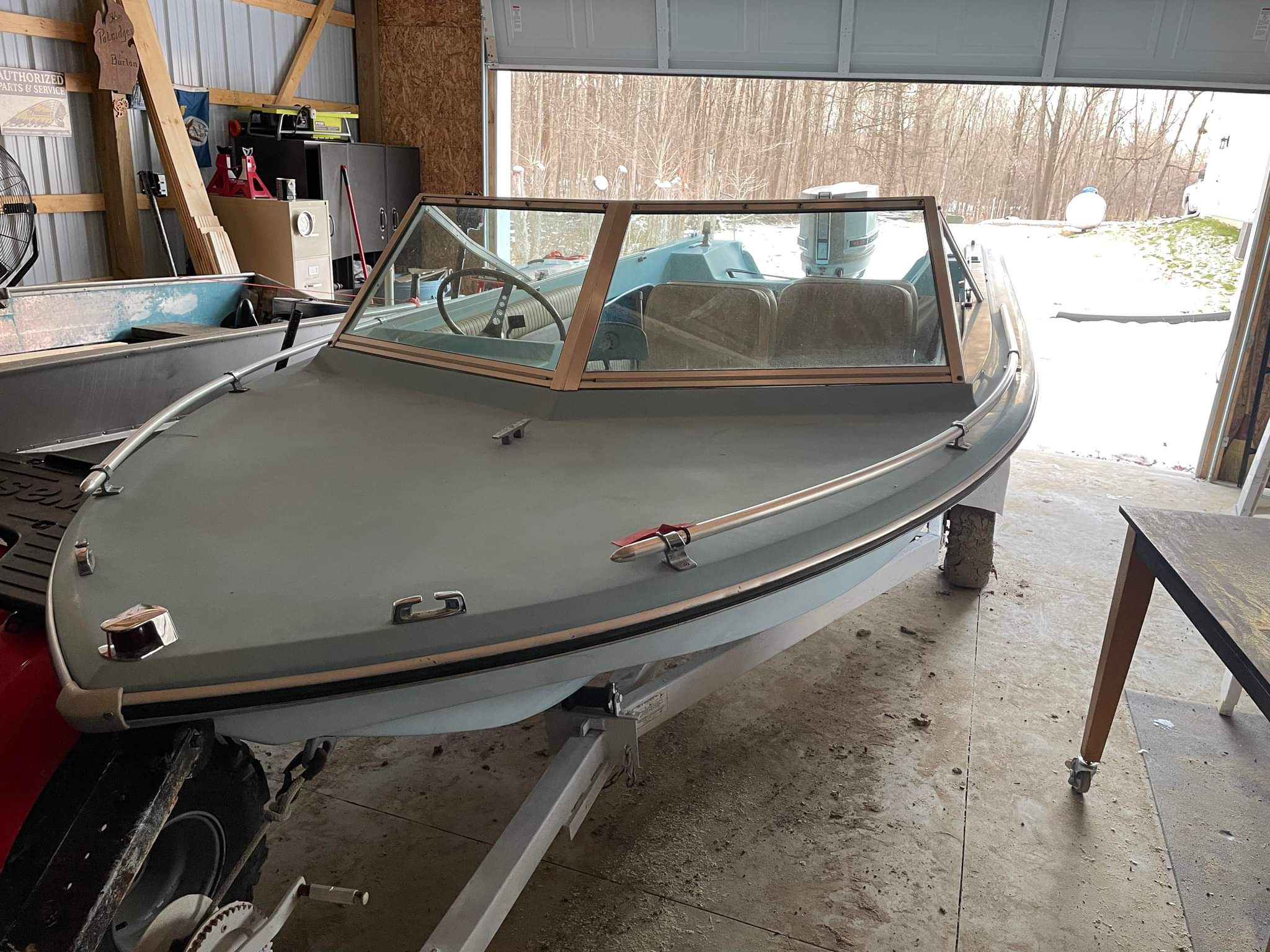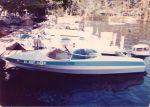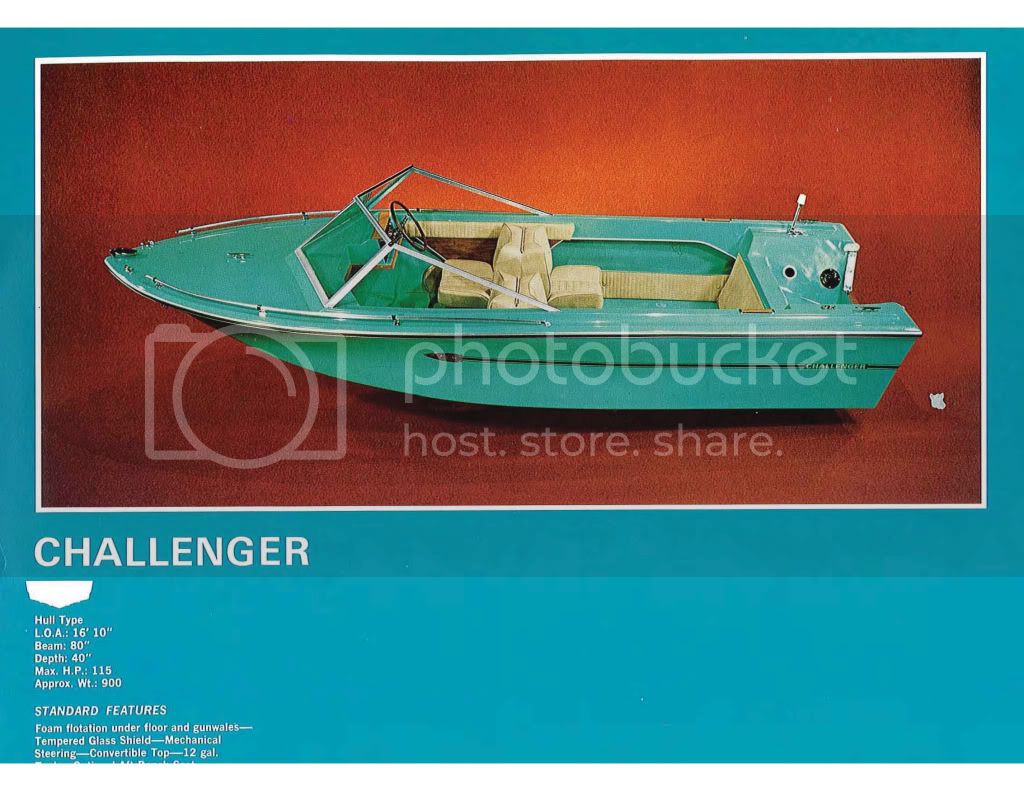Howdy, I don't have access to the old Chrysler parts diagrams, but a little research indicates that the older Magnapower CDI ignitions had points. I pulled up some old pics of Magnapower distributors with your model number, and the pics did show breaker points. So it's possible the points are dirty and need to be cleaned and gapped.
Newer models had electronic pickups inside the distributor, probably not serviceable and would be expensive to track down.
The ign modules on these are gonna be expensive if the one on the motor you're looking at is bad. CDI Electronics sells a combination module and coil unit that's a replacement for the OE parts, at over $300. Saw one of those on eBay.
This page has some good tips for troubleshooting these old Chrysler ignitions, including wire-for-wire i.d. of the ign module functions:
www.outboardignition.com/page2.asp
It seems like you may be able to substitute an OMC CD module for the Chrysler if you find the right one??? That probably needs some research, but a points-fired CD ignition with a distributor doesn't need much to work right. It just has to have a trigger (i.e. points), power, and connections to the coil, etc.
A Chrysler CD ignition module from an old points-fired car could probably be converted to make sparks. For that matter, there are some Mercury ignition modules for CDI that can be made to fire with a set of points and some creative wiring. And those modules are readily available and usually inexpensive.
The other important thing is, how are the internals? If you can take a compression check, more the better. Tilt the engine up and spray some WD-40 or other light lubricant (Marvel Mystery Oil, for example) in the spark plug holes, then turn the flywheel a couple times to distribute the lube.
If the ignition switch doesn't work when you connect a battery, just jumper +12V from the battery with a wire, to the small-wire connection on the starter solenoid. Do compression checks with all plugs out and only the compression gauge screwed into the cylinder being tested. The value of the readings isn't so important as how evenly they compare to each other. If you have one or more cylinders 10 or more psi higher (or lower) than others, the innards have problems and the motor is probably better bought as parts rather than a "fixer".
Biggest problem I've seen on the very old 85hp models was head gaskets blowing out. Usually from lack of re-torque on the head bolts, or in salt water, the head bolts getting seized from salt buildup, then the head "sandwich" can't flex like it's supposed to, the head warps, and away you go. The solution there is to flatten the head with sandpaper laid on a big piece of glass, or much easier take it to a machine shop and have it resurfaced or milled flat. New head gasket, lubed bolts, properly re-torqued, good to go.
If the one you're looking at is a fresh-water motor, the bolts probably won't be stuck and could just be re-torqued.
Also check the lower unit for water in the gear oil. I can't recall if that L/U has a drain plug or has (2) vent plugs up high. If the latter, you'd pull either or both and see what's in there. Or pop the drain plug if it has one. If the oil is all milky, it's got bad oil seals. Usually the driveshaft upper seal, under the water pump.
Anyway, if the motor checks out OK, $300 may be on the high side since it's an off-brand, but it still might be worth working on. Hopefully it comes with the control box, cables, and electrical harness, because those can be pricey to find.
HTH & let us know what you find.............ed



















